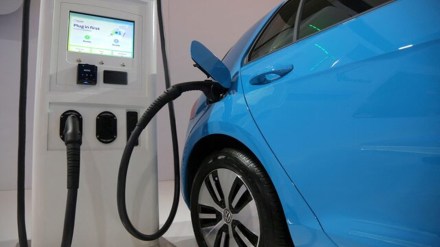Chandigarh, Karnataka, Goa, Delhi, and Tamil Nadu are the five best places for owning and living with an electric vehicle in India, while Jharkhand, Assam, Bihar, Jammu and Kashmir, and Arunachal Pradesh are the places where it’s difficult to use EVs, a study by HERE Technologies (mapping company) and SBD Automotive (consultancy) has found.
Released on Wednesday, the study (called the HERE-SBD EV Index) noted that states and Union territories were ranked based on EV adoption and charging infrastructure in respective places.
Abhijit Sengupta, senior director & head of Business for HERE’s India and Southeast Asian business, told FE that places such as Chandigarh, Karnataka, Goa lead because of a combination of progressive state policies, active infrastructure expansion, and strong EV adoption. “Chandigarh retains the top spot with the highest Index score of 87.9 – this is largely driven by its unique urban profile with compact size, high population density, and limited road network, amplifying the impact of its charging infrastructure,” he said. “This is in addition to the UT’s policy measures such as the Zero Emission Vehicle Deployment plan, which incentivises EV purchases and charger installations, along with a near 1% EV fleet share.”
How do other states fare in the index?
Karnataka climbs from fourth to second place, with a strong charger-per-BEV score, meaning that relative to the number of EVs on its roads, it maintains a strong level of public charger availability, even with a slight dip in overall actual charger numbers.
Goa has an EV fleet share of 0.91%, reflecting early and broad consumer acceptance of EVs.
“Across all three regions, proactive government initiatives, industry participation, and rising consumer demand are progressing in tandem, creating conditions that make them the most EV-ready in India,” Sengupta said.
As far as Delhi is concerned, the capital leads all states and UTs in charger density, with one public charger for every 9 km of road, showcasing an advanced, accessible charging network for its size. But Sengupta said that despite Delhi leading in charger density, it’s at the fourth place because the Index considers multiple factors. “Delhi’s score was impacted by its low average charger power – just 21 kW, among the slowest in the country. In contrast, regions like Chandigarh and Karnataka combine strong charger ratios with higher power ratings and better EV adoption, giving them an edge in the composite Index,” he said.
Installation of CCS chargers
The Index noted that India added 6,800 new public charge points between 2024 and 2025 – these are primarily Type-2 and CCS chargers – and yet average charger power remained flat at 33 kW, which is a sign that while infrastructure is expanding, it’s not evolving quick enough to enable fast charging for the growing EV fleet. Also, the EV-to-charger ratio increased from 12:1 in 2024 to 20:1 in 2025, suggesting that EV adoption is accelerating faster than public charging deployment.
“India’s transport sector stands on the cusp of rapid electrification, yet challenges ahead are considerable,” said Robert Fisher, senior consulting manager, SBD Automotive. “The nation must navigate the distinct requirements of its diverse mobility landscape, as the needs of two- and three-wheeler owners differ greatly from those of car owners and public transport operators. Only through rigorous analysis of market dynamics, user sentiment, and charging infrastructure development can India create an electrification strategy that meets the needs of its population.”
The Index added that the average age of EV owners in India is 35 years, compared to 46 in the US, and 46 in the EU. Also, respondents in India reported the highest frequency of faulty public chargers, with 73% of surveyed EV owners having experienced a failed charging attempt, and the perception of availability of charging infrastructure is the top barrier to adoption, cited by 47% of Indian respondents.
